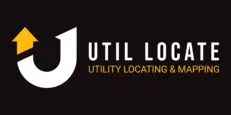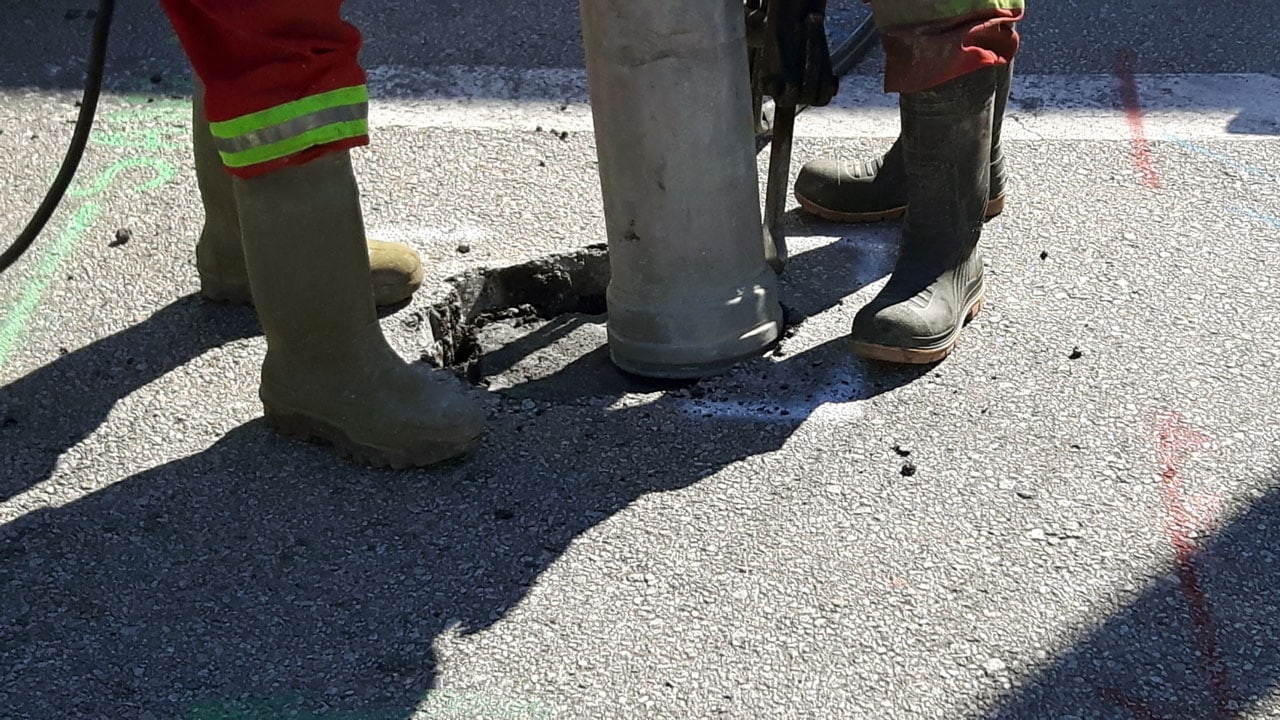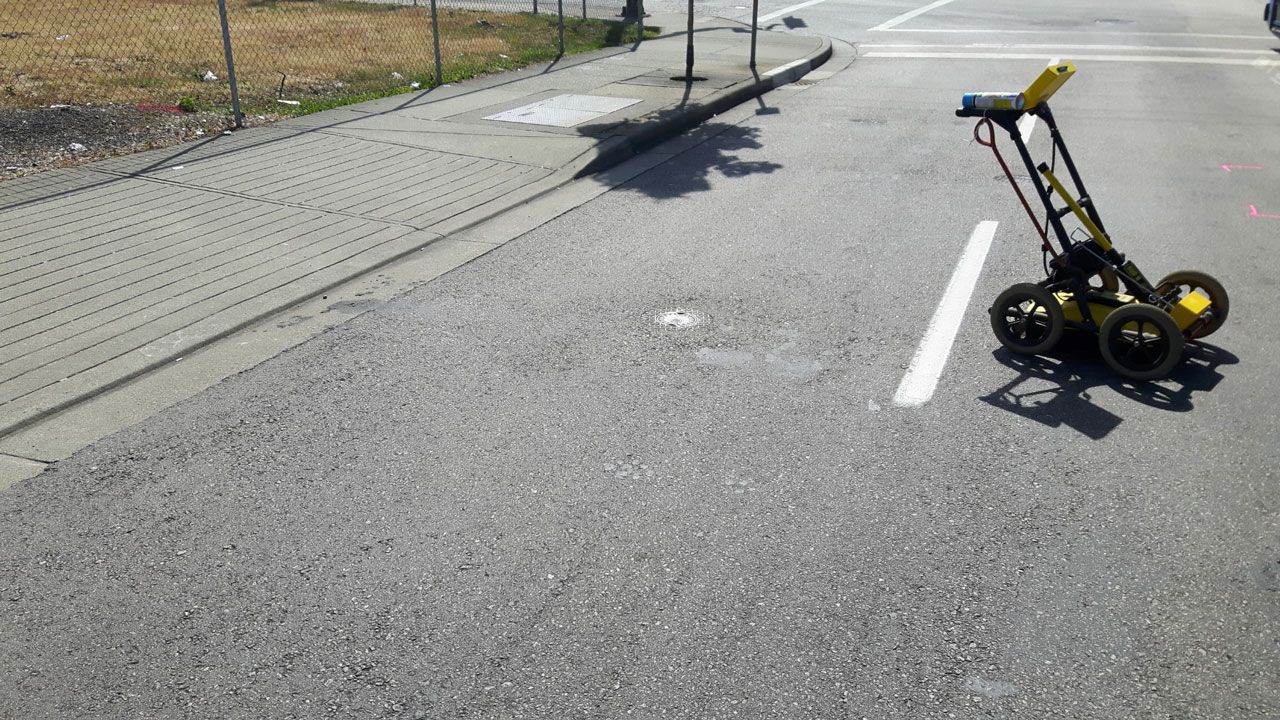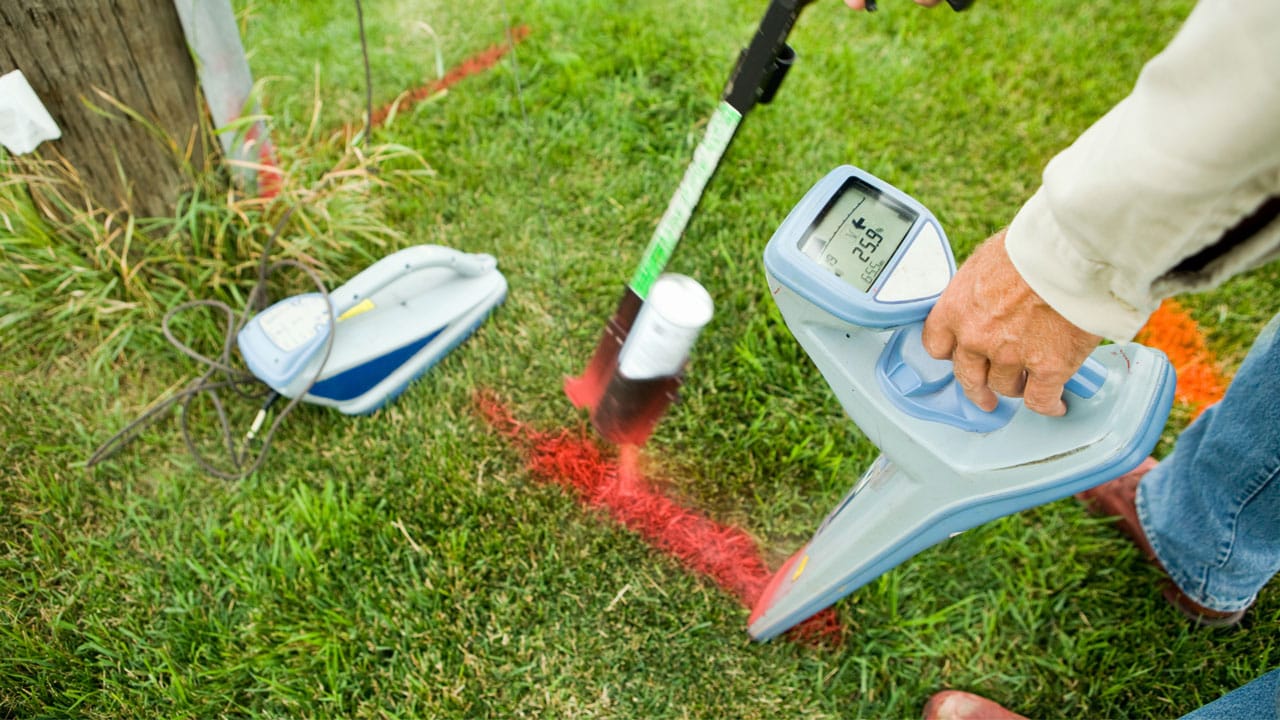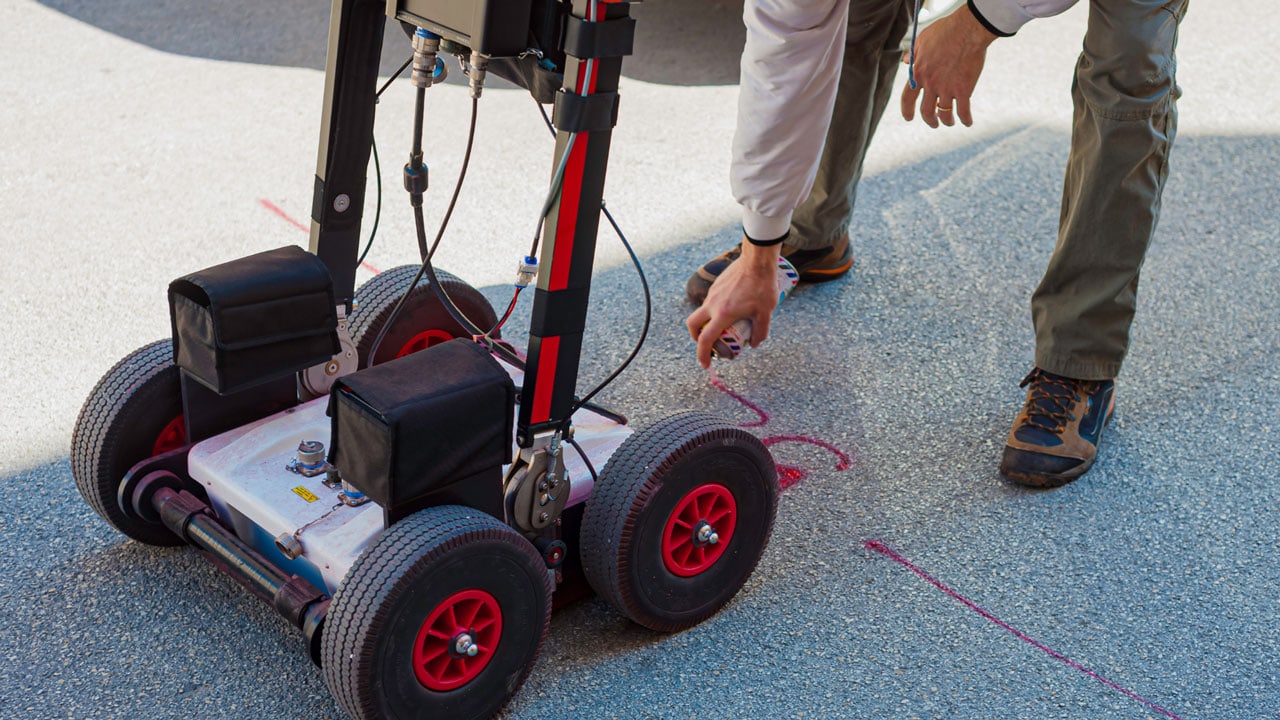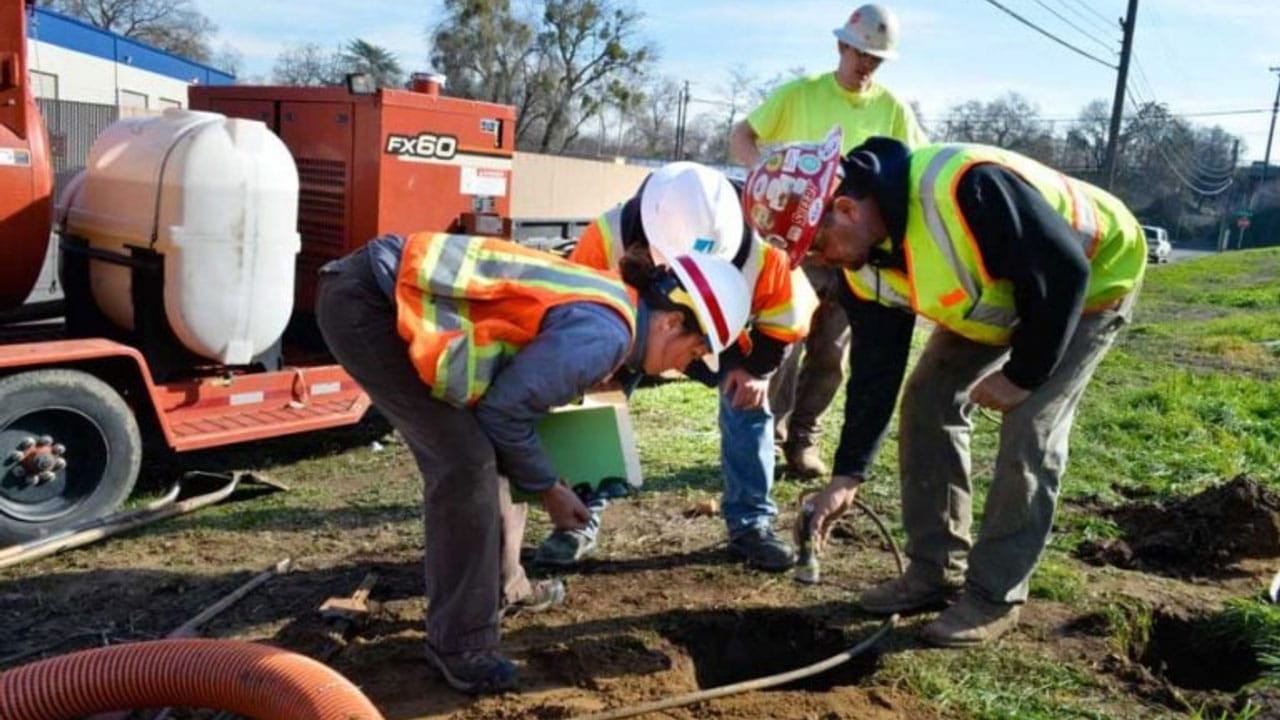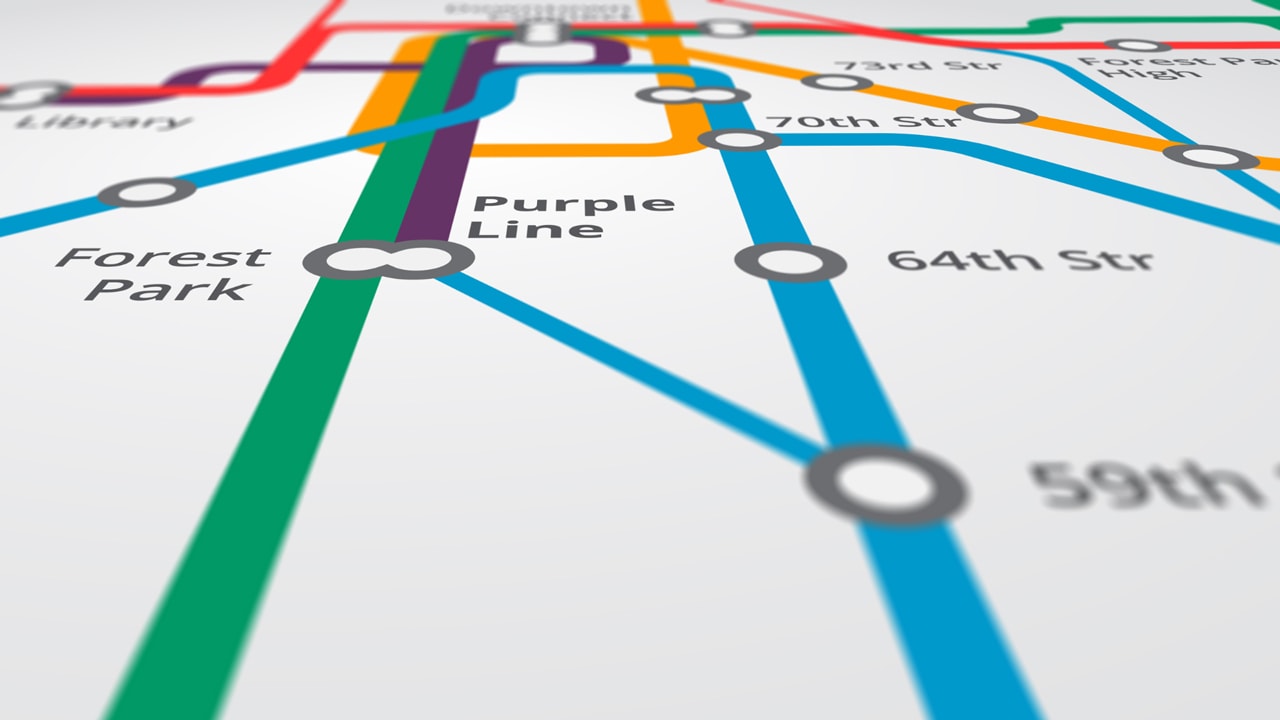In the construction industry, accurately locating and identifying underground utilities is a critical step to prevent damage and ensure safety. Utility potholing, a process to expose underground utilities, has traditionally been performed using manual digging methods.
However, with technological advancements, vacuum excavation, specifically hydro vacuum excavation, has become increasingly popular due to its precision and safety. In this blog, we’ll explore these two primary methods of utility potholing – the vacuum excavation and manual digging – to help you determine the best approach for your projects in Southern California.
Vacuum Excavation To Safely Locate and Expose Buried Utilities
Utility potholing services are critical in the construction industry, particularly for projects in densely populated areas like Los Angeles. This meticulous process involves digging small, exploratory holes to gain visual confirmation of the location of underground utilities, including gas lines, fiber optic cables, and water pipes.
Vacuum excavation, particularly hydrovac excavation and air excavation, represents a significant advancement in potholing utilities. This method employs high-pressure water or air to loosen soil, which is then extracted into a spoil tank via a powerful vacuum system, a process known as hydro vacuum excavation or air excavation, respectively.
This modern approach, also termed as a soft excavation method, is lauded for its precision and minimal physical impact compared to traditional excavation methods.
Ideal Situations for Hydrovac Use
- Urban Environments: In densely populated areas or locations with a complex network of utility lines, hydrovac provides the precision needed to avoid damaging these critical infrastructures.
- Sensitive Ecosystems: Projects near protected landscapes or where environmental impact must be minimized benefit from hydrovac’s less invasive approach.
- High-Risk Areas: Environments with a high probability of utility interference, such as industrial zones or areas with outdated utility maps, warrant the safety and accuracy hydrovac excavation offers.
Pros of Vacuum Excavation
- Safety: Vacuum excavation significantly reduces the risk of damaging underground utilities, which is a constant concern with traditional digging methods. By using non-invasive techniques, vacuum excavators minimize the risk of damage to underground pipes, cables, and other infrastructure.
- Precision: The precision of vacuum excavation is unparalleled. Traditional methods rely more on estimates and can often result in inaccurate utility location, leading to utility strikes.
- Efficiency: Vacuum excavation methods, such as hydrovac and air excavation, are significantly faster than manual digging, particularly in challenging soil conditions.
- Environmental Impact: Compared to traditional digging, vacuum excavation is less disruptive to the surrounding environment and maintains better soil conditions after the excavation process.
Cons of Vacuum Excavation
- Cost: One of the primary disadvantages of vacuum excavation is the cost. The specialized equipment and technology required for hydrovac and air excavation services make it generally more expensive than manual digging methods.
- Accessibility: The heavy machinery used in vacuum excavation may not be suitable for all locations or types of ground. For instance, areas with frozen ground conditions or limited access pose challenges for the bulky equipment typically used.
Manual Digging and Trenching Techniques
Manual excavation, known as traditional digging methods, is the age-old technique involving hand tools such as shovels and pickaxes to create potholes for locating underground utilities like gas lines, fiber optic cables, and water pipes. This approach has been foundational in the construction industry for revealing the evidence of utilities beneath the earth’s surface.
Suitable Scenarios for Manual Excavation
- Small-Scale Projects: Short-term projects with limited budgets, like residential landscaping or simple installations, might not require the technological investment of hydrovac.
- Remote or Inaccessible Areas: Locations where bringing in heavy machinery is logistically challenging or impossible might necessitate manual digging.
- Well-Documented Utility Areas: In areas where underground infrastructure is clearly marked and at a known depth, manual digging can be performed safely.
Pros of Manual Digging
- Cost-Effective: Manual digging incurs lower initial costs since it doesn’t require the sophisticated machinery associated with methods like hydrovac excavation services. This can make it an attractive option for smaller construction projects or those operating under stringent budget constraints.
- Simplicity: This method’s straightforward nature means that it can be executed by most construction teams without the need for extensive training or knowledge of complex equipment.
Cons of Manual Digging
- Risk of Damage: Unlike more modern methods such as hydro vacuum excavation, manual digging carries a significant risk of damaging underground utilities.
- Labor Intensive: The physical exertion required for manual excavation is considerably greater than that of vacuum excavation methods. This labor-intensive process can result in slower project progression.
- Safety Concerns: The manual method exposes workers to higher risks of injury from the strenuous labor involved. Additionally, the uncertainty and lack of visual confirmation inherent in traditional digging methods can lead to accidental strikes of utility lines.
Choosing the Right Utility Locating Method For Your Needs
When deciding which method to employ, consider the following:
Safety and Risk Management
Evaluate the risk levels associated with accidental utility strikes. Projects in high-risk zones should lean towards hydrovac to reduce the likelihood of costly repairs and dangerous accidents.
Budget Constraints
Balance the need for precision and safety against project budget limitations. While hydrovac may have higher upfront costs, it could potentially save money by preventing utility damage.
Timeline and Efficiency
Consider the project timeline. Hydrovac excavation is typically faster than manual methods, especially in challenging soil conditions or when working around multiple utility lines.
Regulatory Compliance
Ensure that whichever method chosen complies with local regulations and industry standards regarding safe digging practices and environmental protection.
Ultimately, the choice between hydrovac and manual digging should be based on a thorough assessment of project-specific factors, including the level of risk associated, environmental conditions, budgetary limits, and regulatory requirements.
For projects demanding high precision and safety, hydrovac excavation services are generally the preferred method. However, manual digging may still hold value for smaller, low-risk projects or in areas with clear utility mapping.
Choose Util-Locate for Expert Utility Potholing Services in Southern California
For your utility potholing needs in Southern California, turn to the experts at Util-Locate. Our professional services ensure precise location and identification of underground utilities, reducing the risk associated with construction projects.
Contact us today to learn more about our utility locating services and how we can help safeguard your construction efforts in Southern California!
